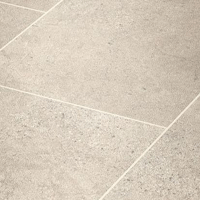 When you are performing a Tile install in your Bathroom or Kitchen it is important to know the correct way to prepare the area for Tile.
When you are performing a Tile install in your Bathroom or Kitchen it is important to know the correct way to prepare the area for Tile.
Some surfaces like concrete floors can take tile directly however if you are installing tile in a bathroom or an area that will have water or high traffic then you must take precautions and use the correct wall backing material or floor underlayment to make sure your tile has a sturdy foundation so it will not crack and so any water that gets behind or under the tile will not cause major damage to your home.
The material that you use will depend on the location and the amount of water that you expect in that area. Some products have dual uses while others only have one use and can not be used in other areas.
Cement Backer Board is one of the most common materials used in bathrooms and kitchens when you are installing tile. This material is very stable and should be installed with a mastic cement and screws. Some contractors will also use a thinset mortar for taping joints.
Cement backer board can be used on floors, countertops, walls, shower surrounds, bathtub build ins for whirlpools. It is a good general material for any area with traffic and water.
Its one drawback is the size of the sheets which are smaller than normal drywall and its cost which is more than drywall.
Waterproof / Resistant Drywall
Water resistant drywall is best used in areas that might see occasional moisture or might be in a humid condition like bathroom walls that DO NOT see direct water contact. You can place it around or behind your vanity and toilet and up to the area where tile will be used in a shower surround. For instance if you were going to build a shower surround and tile only to the minimum required 6 feet high then you could use this material around the the rest of the shower to provide a smooth paintable surface.
This material can not take much force and will flex like normal drywall. You should not use it for building built in shelves in shower surrounds and I personally would not use it in a shower surround at all.. however some contractors will because of the cost and labor associated with cement backer board.
In any high moisture area you should always use drywall with a fiberglass surface. Older drywall came with a paper surface that held and promoted mold growth. This can be dangerous for your health but it can also eat the material from the inside out and one day you will lean on the wall and put your hand through it.
High Water Contact
In areas such as the floor of your shower you must use a rubber membrane or pre-formed shower pan that will not allow water to penetrate. The height of the material is normally 12 inches from the base and the membrane comes in one piece which can not be glued to fit the shape.
Membrane material is normally associated with a mortar concrete pan install. This is a hand made floor pan that is build on site which allows you to lay tile.
Liquid membrane is really not the best call for most installs. Many contractors use it to coat standard drywall to reduce water penetration. It may have its uses but I would not normally use it in a shower surround, bathroom or kitchen install where other options are available.
Plywood or Luan Underlayment
Luan or regular plywood can be used for underlayment but normally these plywood materials are used for installing vinyl not ceramic tile.
If you were building something like a basement bar and wanted to use plywood or even regular drywall in an area that won’t see direct water .. well that would probably be fine.
Standard Drywall
You can apply tile directly to standard drywall in areas that will not see direct water contact. This is fine for kitchen back splashes or walls in your bathroom not requiring cement backerboard.
Final Note
The higher the chance of moisture or pressure on the tile the more you will need to reduce any chance of failure.
Normally cement backer board used in bathroom floors must be a half inch and many contractors will put in a double layer in a way that seams do not overlap.
When in doubt ask your material supplier what the minimum and then what the suggested methods are for your project. .. then always go with the suggested or best way. Remember you are trying to emulate concrete (a surface that does not need backer material) so it has to be hard and water resistant.
